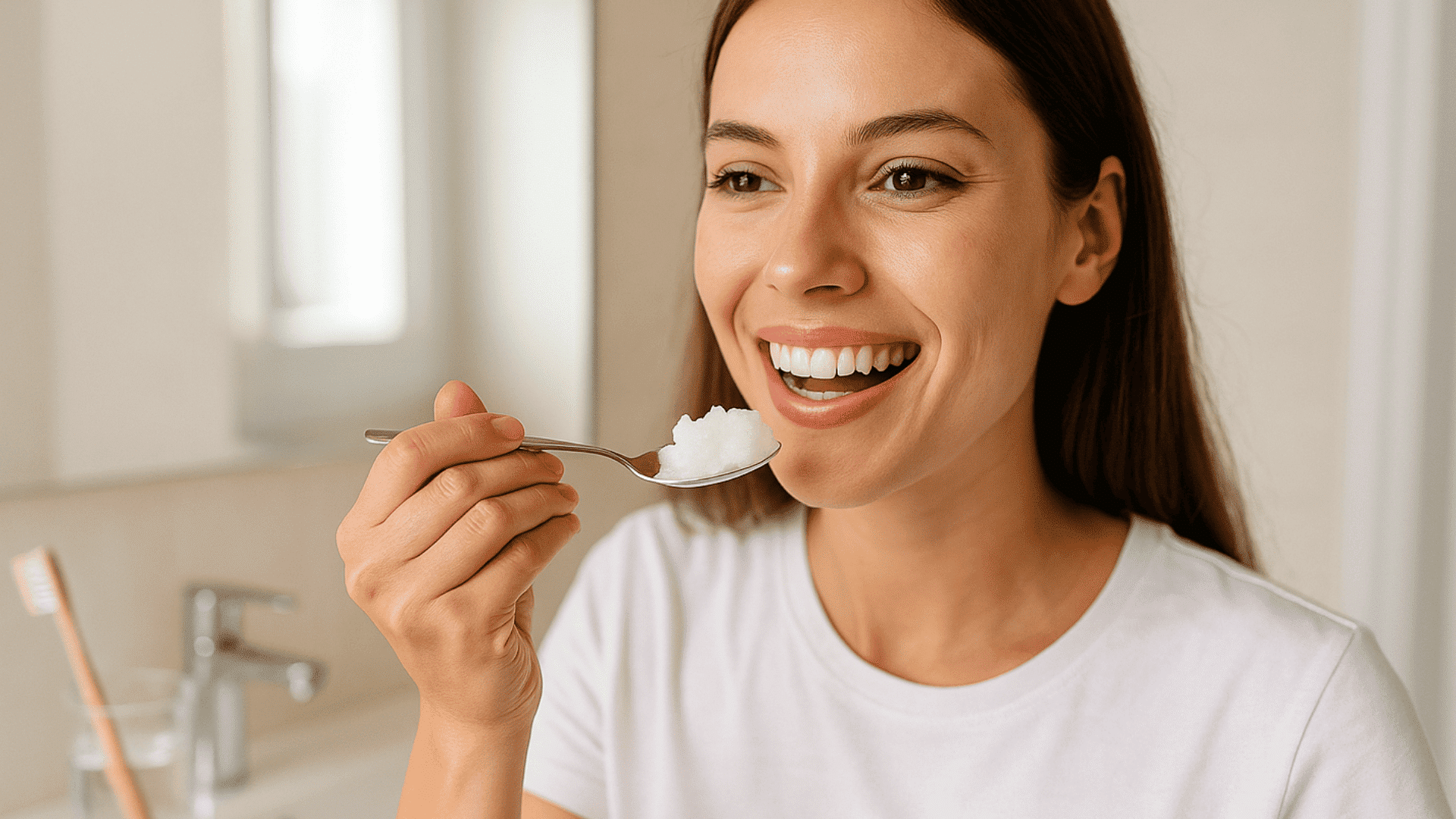Your morning breath tells a story, and it’s not a good one. Fuzzy teeth, visible plaque, bleeding gums. We’ve all been there.
This ancient practice delivers changes that surprise even the most skeptical: whiter teeth, healthier gums, and all-day fresh breath.
Before and after oil pulling, timing matters. The best time to oil pull is early in the morning on an empty stomach, when oral bacteria levels are at their highest.
What makes swishing oil for 15 minutes create such dramatic results? Let’s identify the genuine before-and-after changes that convert doubters into daily practitioners.
What Is Oil Pulling?
Oil pulling is an ancient health practice originating from Ayurvedic medicine, known by two traditional names: Kavala Gandoosha and Kavala Graha. This simple technique has been used for thousands of years to promote better health.
The key difference is the timing; you need to swish the oil for anywhere between 5 and 20 minutes. During this time, the oil moves between your teeth and around your gums, reaching all areas of your mouth.
Many people notice significant changes before and after oil pulling ,from fresher breath to whiter teeth. They claim it can benefit the health of your whole body, too.
The practice is based on the belief that oral health connects directly to overall wellness, making a clean mouth essential for a healthy body.
Types of Oil Pulling
Oil pulling comes in two traditional forms, each with distinct techniques that suit different preferences and goals:
| ASPECT | KAVALA GANDOOSHA | KAVALA GRAHA |
|---|---|---|
| Oil Amount | Fills the mouth completely with oil | Uses a smaller, manageable amount |
| Technique | Hold oil without gargling | Allows active gargling and swishing |
| Movement | Slow, deliberate movements | Vigorous swishing between teeth |
| Coverage | Oil reaches every corner naturally | Dynamic cleansing around gums |
| Action | Creates a full rinse that sits in the mouth | Forceful movement through teeth |
| Best For | Thorough, complete mouth coverage | Beginners and first-time users |
| Comfort Level | Can feel overwhelming initially | More comfortable and less intense |
Understanding the differences before and after oil pulling helps you choose the right technique : start with Kavala Graha if you’re new to the practice, then progress to Kavala Gandoosha for maximum cleansing benefits.
Oils Commonly Used for Oil Pulling
Different oils offer unique benefits for your oral health routine, with many people documenting their before and after oil pulling experiences to track improvements.
Each type brings specific properties that target various oral health concerns, making before and after oil pulling comparisons helpful for choosing the right oil.
1. Coconut Oil
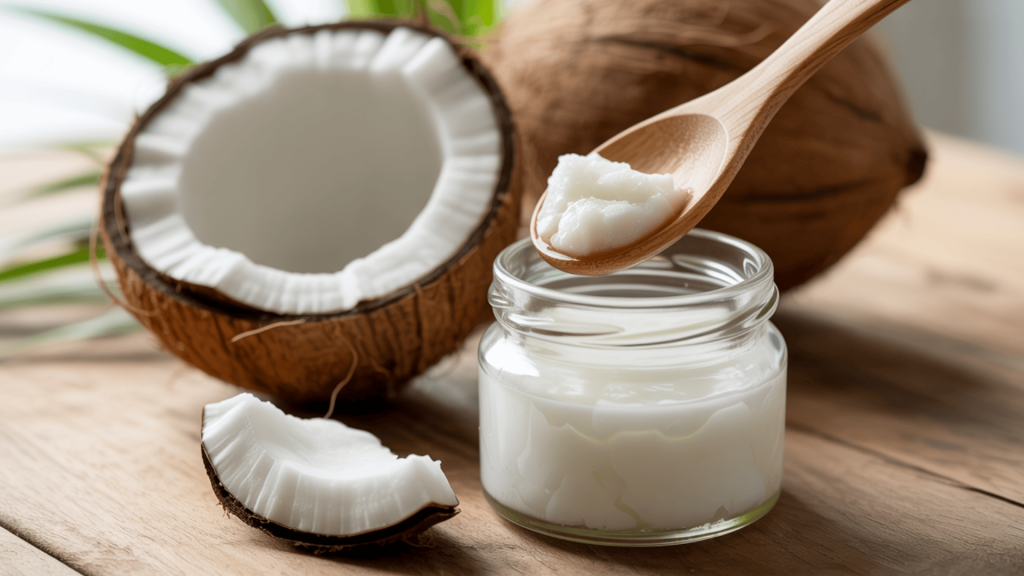
Coconut oil fights bacteria with its natural antimicrobial properties, while reducing inflammation throughout the mouth. Its lauric acid content specifically targets harmful bacteria that cause tooth decay and gum disease.
The gentle, enjoyable flavor makes your mornings more pleasant, and it easily hardens at room temperature, making storage a breeze.
2. Sesame Oil
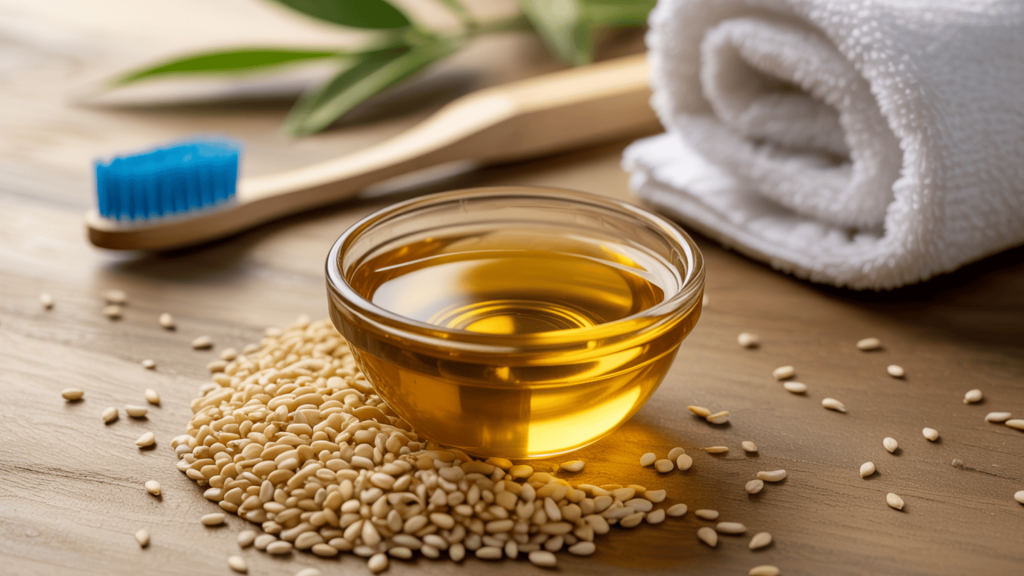
Sesame oil contains powerful antioxidants that reduce plaque buildup and strengthen gum tissue. Traditional Ayurveda considers this the gold standard for oil pulling, used for thousands of years.
Its sesamin and sesamolin compounds provide anti-inflammatory benefits while the oil’s texture effectively pulls toxins from hard-to-reach areas.
3. Olive Oil
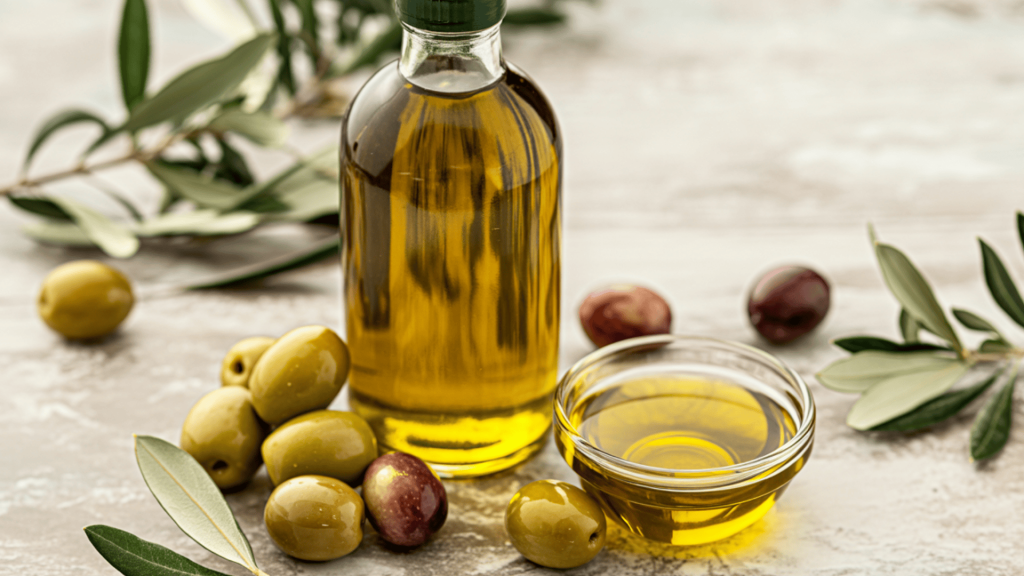
Olive oil delivers vitamins A, E, and K directly to the gum tissue while naturally neutralizing bad breath. The monounsaturated fats soothe irritated gums and promote healing.
Its thicker consistency forms a gentle, protective coating that helps shield teeth from bacteria all day long, offering an extra layer of care and security.
4. Sunflower Oil
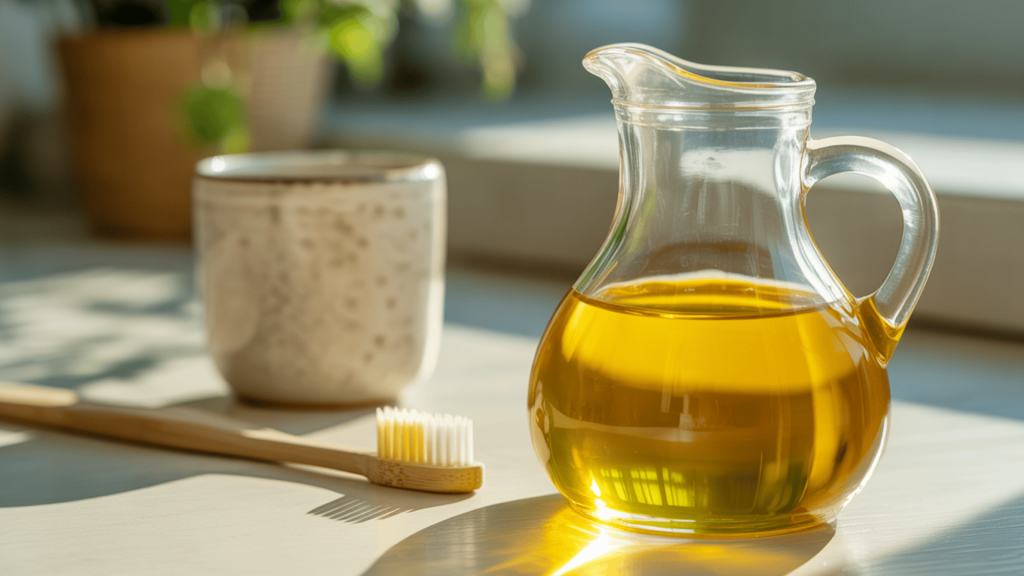
Sunflower oil not only fights bacteria but also helps reduce plaque effectively, all at a budget-friendly price.
Rich in vitamin E, it helps repair damaged gum tissue while its light texture makes swishing comfortable. Studies show it reduces gingivitis as effectively as more expensive options.
Morning Oil Pulling Routine for Best Results
Oil pulling is most effective when done in the morning on an empty stomach. This timing catches bacteria at their highest levels overnight.
| STEP | INSTRUCTIONS | KEY TIPS |
|---|---|---|
| Measure Oil | Take one tablespoon of oil | Use coconut, sesame, or sunflower oil |
| Swish Gently | Push and pull oil between teeth and around gums | Move like slow mouthwash, not vigorous gargling |
| Duration | Continue for 5-20 minutes | Oil should double in size when ready |
| Disposal | Spit into the trash can | Never spit in the sink, clogs pipes |
| Rinse | Rinse mouth with warm water | Removes remaining oil residue |
| Brush | Brush teeth normally | Complete your regular dental routine |
Success with oil pulling depends on consistency, not intensity. Gentle, regular practice yields better results than infrequent, vigorous sessions.
Begin with 5 minutes and increase to 15-20 minutes as your jaw gets stronger, perhaps swishing during a shower or breakfast.
Benefits of Oil Pulling
Oil pulling offers multiple oral health benefits, backed by research, and potential systemic improvements that people regularly report experiencing.
- Tooth decay prevention: reduces cavity-causing bacteria like Streptococcus mutans
- Gum health: lowers plaque buildup and gingivitis scores significantly
- Bad breath reduction: works as effectively as chlorhexidine mouthwash
- Fungal infections: helps denture wearers and immune-compromised individuals
- Teeth whitening: users report brighter smiles after regular use
- Systemic benefits: may help with migraines, asthma, and diabetes
Begin with proven oral health benefits and note any additional improvements you observe. Many practitioners report unexpected positive changes beyond their mouths.
What to Expect Before, During, and After
Oil pulling creates distinct changes at each stage of the process. Knowing what’s normal helps you practice correctly and track your progress effectively.
Understanding the before and after oil pulling experience prepares you for the transformation ahead.
| STAGE | WHAT HAPPENS | KEY TIPS |
|---|---|---|
| Before | Start on an empty stomach | Morning timing works best, before eating or drinking |
| During | Oil turns thin and milky as it mixes with saliva | Spit when the texture changes, never swallow the toxin-filled oil |
| After | Immediate fresh breath, cleaner mouth feeling | Long-term use brings healthier gums and whiter teeth |
Track your progress weekly. Most people notice fresher breath immediately before and after oil pulling, while gum improvements become apparent after two to three weeks of daily use.
Who Might Benefit and Who Should Avoid
Oil pulling is effective for addressing specific oral health concerns, but it may not be suitable for everyone. Check these guidelines before starting your practice.
- Best for: People with chronic bad breath, excessive plaque buildup, or dry mouth conditions find significant relief through regular oil pulling.
- Must avoid: Children under 5 (choking risk), anyone allergic to specific oils, and those recovering from oral surgery or active infections.
- Use caution: People prone to gagging or morning nausea should start with tiny amounts and shorter sessions.
- Consult first: Pregnant women and those with jaw disorders should check with healthcare providers before beginning.
Remember, oil pulling complements but doesn’t replace regular dental care. The differences you’ll notice before and after oil pulling work best when combined with regular brushing and flossing.
Continue your normal dental routine and visit your dentist regularly for optimal oral health.
Tips for Getting Started
Starting oil pulling feels easier with the right approach. These tips help you establish a routine without feeling overwhelmed.
- Use cold-pressed, organic oils for best results.
- Start with 3-5 minutes daily, then gradually increase to 15-20 minutes.
- Spit oil into the trash, not the sink; it clogs pipes.
- Swish while doing other things, such as showering or making coffee.
- Do it at the same time each day, preferably right after waking.
Most people see improvements within two weeks. Give it a full month to experience all the benefits.
The Bottom Line
The best time to oil pull? Right now, commit to tomorrow morning’s 5-minute ritual that costs pennies but delivers premium oral health results.
Set your alarm now. Grab coconut oil tonight. Start tomorrow’s healthier smile with one simple swish
After oil pulling, simply rinse and brush your teeth. Before eating, swish coconut oil to catch bacteria at their peak overnight.
Set your alarm tonight. Buy organic oil today. Change your oral health tomorrow.
Frequently Asked Questions (FAQs)
Get answers to the most common questions about oil pulling and its effects on oral health. These evidence-based responses help you make informed decisions about incorporating this practice into your routine.
How Long Before You See Results from Oil Pulling?
Oil pulling reduces bacteria and plaque within two weeks of daily practice, with fuller results appearing over several weeks. It supplements, never replaces, regular brushing, flossing, and dental check-ups.
Why Don’t Dentists Like Oil Pulling?
Dentists don’t recommend oil pulling, as there’s no scientific evidence to prove its benefits. Proven, tested dental products remain more practical and effective for oral health.
What Happens if We Do Oil Pulling Every Day?
Regular oil pulling promotes fresher breath, healthier gums, and cleaner teeth by dislodging food particles and plaque, helping prevent cavities and gum disease.
Does Oil Pulling Whiten Teeth?
Oil pulling doesn’t significantly whiten teeth as it lacks bleaching agents and scientific backing.
While it may remove superficial stains for minimal brightening, dentists recommend professional treatments or proven whitening products for actual results.
Can Oil Pulling Reverse Cavities?
Oil pulling cannot reverse cavities, holes in teeth require dental fillings, root canals, or crowns. While it may reduce bacteria and support early enamel health, existing decay needs professional treatment.

